Joshimath, Rudraprayag, and Himalayan Char Dhama Yatra
Rare darsana of Lord Nrsimhadeva from Joshimath Nrsimhadeva Temple
Joshimath, Rudraprayag, and
Important places to visit at Joshimath, Rudraprayag, Augustmuni and Himalayan Char Dhama:
1. Lord Nrsimhadeva Temple at Joshimath
2. Sri Vasudeva Temple at Joshimath
3. Vishnu Prayag
(Useful information: It is 10 kms from Joshimath, on the way to Badrinath.)
4. Sri Yogadhyan Badri Temple at Pandukeswar
(Useful information: It is between Vishnu Prayag and Badrinath.)
5. Rudra Prayag
(Useful information: It is less than 2-hour drive from Devprayag on the way to Badrinath.)
6. Augustmuni
(Useful information: It is 17 kms from Rudra Prayag on the way to Kedarnath.)
7. Nanda Prayag
8. Karna Prayag, Adi Badri Temple and Nauti Village
9. Hanuman Chatti (Badrinath route)
(Useful information: It is 11 kms from Pandukeswar and 13 kms before Badrinath.)
10. Sripada Sankaracarya Math at Joshimath
11. Bhavisya Badri – The Future Abode of Lord Badri Vihal
(Useful information: It is 17 kms from Joshimath.)
12. Govind Ghata, Lakshmana Temple, Hemkund Sahib and Valley of Flowers
(Useful information: Govind Ghata is 11 kms from Vishnu Prayag and is the starting point for the trek to Valley of Flowers and Hemkund Sahib.)
13. Yamunotri and the surrounding places
14. Kedarnath and the surrounding places
15. Sri Triyugi Narayana Temple
16. Sri Bansi Narayana Temple
17. Ukhimath
18. Gangotri, Gaumukh and the surrounding places
19. Devprayag
(Useful information: Devprayag is located 75 km from Rishikesh. It is easily assessable by road and is open during the winter months.)
Endowed with nature’s bounty and tranquillity, the Himalayas have been the abode since time immemorial for the Supreme Lord as Lord Nara-Narayana Rsi and many revered sages like Srila Vyasadeva, Agastya Muni and others. The Himalayas is also the home of many important timeless holy towns and villages, including Dev-prayag, where Lord Ramacandra and Lord Vamana Himself came. Lord Nityananda Prabhu also visited this region. Rudra-prayag, Karna-prayag, Nanda-prayag, Joshimath, Vishnu-prayag, Pandukeswar and Badrinath Dhama are on the same route when traveling on road from Rishikesh to Mana Village. Yamunotri, from where the Yamuna River originates, Gangotri and Gaumukha, the origins of the Ganges River, the tiny, almost forgotten important town of Augustmuni, Kedarnath, and the daunting peaks of Mansarovar in Tibet, are other places at the lap of the Himalayas. Lord Krishna says in Bhagavad-Gita 10.25, "Of immovable things I am the Himalayas".
The name Joshimath or Jyotirmath means "Monastery of light." It is also the winter abode of Lord Badri Vihal. When Badrinath closes during the winter, the priests from the Badrinath Temple come to Joshimath and continue their worship at the Lord Nrsimhadeva Temple. Joshimath is a 10-hour drive from Rishikesh and a 2-hour drive before reaching Badrinath Dhama. The ancient and famous Lord Nrsimhadeva Temple at Joshimath is situated on a small plateau and is surrounded by the beautiful Himalayan peaks from all the sides. Inside the splendorous architectural temple is a deity of Lord Nrsimhadeva, self-manifested from a saligrama-sila. Lord Nrsimhadeva is 25cm (10 in) tall and remarkably intricate, sitting in a lotus position. To the right of Lord Nrsimha are Sri Sri Sita, Rama, Lakshmana, Hanuman and Garuda. On the altar to the right are Kuvera, Uddhava and Sri Badri Vishal. Lakshmi Devi’s altar is just outside the door of the temple. The temple has a large courtyard. Adjoining the courtyard is Sri Vasudeva Temple, dedicated to Lord Sri Krishna. This temple is recognized among 108 Divya-desams by the saints of Ramunajacarya Vaisnava sampradaya.
Beautiful and serene, Vishnu Prayag is 10 kms from Joshimath going towards Badrinath. Bedecked on the holy confluence of the Alaknanda and Dhauli-ganga rivers, Vishnuprayag is a bijou city tucked at 1,372 metres above sea level. The riveting Vishnuprayag is the first one among the Panch Prayags, the other four being Nandaprayag, Karnaprayag, Rudraprayag and Devprayag according to the descending order of the Alakananda river. The Alakananda River, originating from Satopanth glacier, 25 kms beyond Badrinath Dhama, joins the icy waters of the Dhauli Ganga River, originating from Tibet (China).
Pandukeswar is 18 kms from Joshimath enroute to Badrinath. In this important tiny village amidst the serene beauty of the Garhwal Himalayas is an ancient Sri Yogadhyan Badri temple. This is one of the five Badri temples (Panch Badri). This is the winter abode of the utsava-murties of Uddhava and Kuvera. Maharaja Pandu, the father of the Pandavas, lived here with his wives Kunti devi and Madri after giving up his kingdom to his brother, Dhrtarastra. He installed a life-size deity of Lord Vishnu here. By worshiping Their Lordships, he performed penance to redeem him of the sin of killing the two mating deer, who were ascetics in their previous lives. When the Pandavas retired from their kingdom at Hastinapur, they came to Sri Yogadhyan Badri temple while going to Badrinath Dhama. They installed a deity of their mother, Madri, here.
The famed and charming town of Rudra Prayag is named after the Rudra avatar of Lord Siva, who had appeared here having been pleased by the severe penances performed by the great sage Narada Muni for a hundred celestial years, desiring to master the art of transcendental music. The ancient Sri Rudranath Ji temple on the bank of the confluence of the Alaknanda and Mandakini rivers marks the exact spot where this pastime happened. Pleased by Narada's devoutness, Lord Siva blessed him with the art of transcendental music and granted him "Veena" (Lute). We can have the darsana of Narada Muni playing vina (lute) and an ancient tree underneath where Narada performed the penance. A wonderful Vaisnava bhajan 'Narada Muni Bajay Vina Radhika Ramana Naame' by Srila Bhaktivinoda Thakura in his Gitavali - Namastakam Song, glorifies that when the great soul Narada Muni plays his stringed vina, the holy name of Radhika-ramana descends and immediately appears amidst the kirtana of the Lord’s devotees.
Amidst the breathtaking spectacular sights of the Himalayas, one witnesses the holy embrace of the Alaknanda and Mandakini Rivers, which also makes it one of the much revered Panch Prayags. Located at the intersection on the way to Badrinath Dhama (150 kms away) and Kedarnath (50 kms away), Rudraprayag is blessed with ineffable serenity, encircled by emerald lakes, glaciers and silver streams, and reminiscence us the words of Lord Sri Krishna in Bhagavad-Gita 10.41-42: "Know that all opulent, beautiful and glorious creations spring from but a spark of My splendour. But what need is there, Arjuna, for all this detailed knowledge? With a single fragment of Myself I pervade and support this entire universe."
The almost forgotten tiny town of Augustmuni is 17 kms from Rudraprayag on the banks of the Mandakini River. The sage Agastya performed austerities here to please the Supreme Lord. The ancient Agastya Muni Temple is an important landmark that is worth visiting. The pastime related to the two notorious demon brothers, Ilvala (also known as Atapi) and Vatapi, and their encounter with sage Agastya took place here. Srimad-Bhagavatam Canto 6.18.15 mentions Ilvala and Vatapi and Ramayana describes this pastime vividly. Augustmuni town is situated on the way to Kedarnath shrine.
Hanuman Chatti is 11 kms further up from Pandukeswar, going towards Badrinath Dhama. Bhima and Hanuman met here. Out of his causeless mercy and to safeguard Bhima from impending dangers, Hanuman shattered the pride of Bhima and blessed him before the Kurukshetra war.
Bedecked at the confluence of two holy rivers, Alaknanda and the Pindar Ganga, Karna Prayag is another Panch Prayags situated on the way to Badrinath. This town is named after Karna, who did penance here to obtain an impregnable kavaca (armour) and kundala (ear rings) from his father, the Sun god. This protective gear gave Karna superior powers. Sri Adi Badri Temple, located 18 kms from Karnaprayag on the way to Dwarahat in Kumaon, is the famous Panch Badri of Uttarakhand. This temple is distinguished by a raised platform in the pyramidal form, where the black stone deity of Lord Vishnu is enshrined. The small village of Nauti is famous for the Nanda Raj Jat Yatra, which is a grand procession held once in 12 years is 24 kms from the Karnaprayag.
Nandaprayag gets its name from the Nanda Maharaja, the foster-father of Lord Sri Krishna. Nanda Maharaja performed a great sacrifice at this spot. The ancient Sri Gopala Ji Temple dedicated to Lord Krishna marks this pastime. Nanda Prayag is the second prayag in the cascade sequence of confluences coming down from the Garhwal Himalayas.
Govind-ghata is a pristine hamlet perched 10 kms away from Vishnuprayag at the confluence of the Alaknanda and Lakshman Ganga rivers. It is the starting point of the trek to the revered Sikh shrine Sri Hemkund Sahib, Lakshmana Temple and, stunningly beautiful, the Valley of Flowers. This Sikh shrine is named after the nearby glacial lake, Hemkund, which means "Lake of Snow" due to its icy waters and stunning location amidst the Himalayan peaks. The star-shaped Hemkund Sahib Gurudwara is made up of white marbles and is located on the shores of the pristine Hemkund Lake. A temple of Lakshmana, the brother of Lord Ramacandra, is also bedecked on the shore of Hemkund Lake surrounded by seven towering Himalayan peaks, collectively called Hemkund Parvat, adorned with snow. At this place, Lakshmana performed penances.
Yamunotri temple is situated on a 5-km-long ridge at the southern edge of the Kasyapa hills in the shape of a horse saddle. Inside the temple there is an intricately carved deity of Yamuna devi in polished black ebony. Another deity of Mother Ganges is on its side on the same altar. Yamuna had the immense fortune to serve Lord Krishna and the inhabitants of Vraja in their transcendental pastimes 5000 years ago, and Lord Sri Caitanya Mahaprabhu pastimes about 500 years ago when He visited Vrindavana. Garga Samhita and Brahma Vaivarta Purana describe that Yamuna flows in Goloka Vrindavana. Having been ordained by Srimati Radharani, Yamuna descended into the material realm to facilitate the pastimes of Lord Krishna. Yamuna devi is also the daughter of Surya (sun) and the twin sister of Yamaraja. Srimad-Bhagavatam Canto 10 chapter 58 describes that in Dvaraka-lila, Yamuna (Kalindi) is one of the eight principal queens of Lord Krishna, along with Rukmini, Satyabhama, Jambavati, Mitravinda, Nagnajiti (Satya), Lakshmana and Bhadra. Following the instructions of her father, Sun-god, she performed severe penances with great determination underwater to have only Lord Krishna as her husband. With the help of Arjuna, she met Lord Krishna, who accepted her as His wife. Sri Caitanya Caritamrta Madhya 3.28 mentions a famous verse where Lord Caitanya Mahaprabhu glorifies Yamuna:
cid-ananda-bhanoh sada nanda-sunoh
para-prema-patri drava-brahma-gatri
aghanam lavitri jagat-ksema-dhatri
pavitri-kriyan no vapur mitra-putri
“O river Yamuna, you are the blissful spiritual water that gives love to the son of Nanda Maharaja. You are the same as the water of the spiritual world, for you can vanquish all our offenses and the sinful reactions incurred in life. You are the creator of all auspicious things for the world. O daughter of the sun-god, kindly purify us by your pious activities.”
Kedarnath, the revered abode of Lord Siva, is flanked by breathtaking snow-capped peaks. This place is connected to the Pandavas, when they desired to meet Lord Siva at Kasi after the battle of Kurukshetra. However, Lord Siva fled and playfully hid from their sight. The Pandavas discovered him in the Himalayas at Gupta Kasi (“Hidden Kasi”), disguised as a brahmana. Having been found, Lord Siva ran away to a valley and disguised himself as a bull, but Bhima stretched his big legs. Lord Siva, still trying to hide, began to bury himself in the ground. But the determination of the Pandavas won him over, and before the bull’s hump had disappeared, Lord Siva decided to give them his audience. He instructed the Pandavas to worship the hump of the bull, and this worship is still going on in Panch Kedars (five Kedars): (1) Kedarnath—hump, (2) Tunganath—arm, (3) Rudranath—face, (4) Kalpeshwar—hair, and (5) Madhyamaheswar—navel.
Sri Triyugi Narayana Temple at Triyugi Narayana Village is another unique temple connected with the pastime where the wedding of Lord Siva and Parvati took place. Lord Vishnu did all the arrangements for this celestial wedding and acted as Parvati's brother, while Lord Brahma played the role of a priest. Because the marriage took place in front of Lord Vishnu, Sri Triyugi Narayana Temple was built in its honour. The Brahma-sila in front of the temple marks the exact place of the wedding. It is 37km from the town of Ukhimath.
Ukhimath is a tiny hamlet and the winter seat of Kedarnath. Aniruddha, the grandson of Lord Krishna, and Usha, the daughter of Banasura, got married at Omkareshwar Temple in Ukhimath. 'Ushamath' was the former name of Ukhimath, which was kept after Usa, the daughter of Banasura. Srimad-Bhagavatam Canto 10 chapters 62 and 63 describe the pastime of the meeting of Usa and Aniruddha, and Lord Krishna fights with Banasura.
Gangotri is situated on the western Himalayan side of Uttarakhand, amid lofty Garhwal Himalayan peaks, surrounded by glaciers and dense forests. The revered Gangotri Temple is dedicated to Mother Ganges. Srimad-Bhagavatam Canto 5 chapter 17 describes the pastime of the descent of the Mother Ganges in relation with Lord Vamana’s pastime. Srimad-Bhagavatam Canto 9 chapters 8 and 9 describe the pastime of the descent of the Mother Ganges to earth in relation with King Sagara, Lord Kapila and King Bhagiratha pastime. In Bhagavad-Gita 10.31, Lord Krishna says - srotasam asmi jahnavi - "Of flowing rivers I am the Ganges."
Dev-prayag, Rudra-prayag, Karna-prayag, Nanda-prayag, Joshimath, Vishnu-prayag, Pandukeswar and Badrinath Dhama come enroute when traveling on road from Rishikesh to Mana Village beyond Badrinath. Augustmuni is just 17 kms off the main route from Rudraprayag, enroute to Kedarnath. Gangotri, Gaumukha, Yamunotri, Kedarnath, Gauri Kunda, Patangna, Tapovan, Kedar Tal, Triyugi Narayana and Surya Kunda are other significant places to visit in the Himalayas, which are in the Uttarakhand state. They are on different routes to Badrinath. The easiest way to start the Himalayan Char Dhama Yatra is to come to Jolly Grant airport in Dehradun. Dehradun is well-connected by daily short-duration flights from Delhi. Rishikesh and Haridwar are also connected by rail and road to the rest of India. There are helicopter services available from Dehradun to visit Yamunotri, Gangotri, Kedarnath and Badrinath Dhamas. Kailash Mansarovar is located at an elevation of 4600 meters near the western trijunction between India, China and Nepal. To visit Kailash Mansarovar, one has to obtain special permits from the Indian and Chinese governments.
1. Lord Nrsimhadeva Temple Joshimath
The ancient and famous Lord Nrsimhadeva Temple at Joshimath is situated on a small plateau and is surrounded by the beautiful Himalayan peaks from all the sides. Inside the temple there is a deity of Lord Nrsimhadeva, a self-manifested from a saligrama-sila. Lord Nrsimhadeva is 25cm (10 in) tall and remarkably detailed, sitting in a lotus position. To the right of Lord Nrsimha are Sri Sri Sita, Rama, Lakshmana, Hanuman and Garuda. On the altar to the right of Lord Nrsimhadeva are Kubera, Uddhava and Sri Badri Vishal. Lakshmi devi’s altar is just outside the door of the temple.
Sripad Sankaracarya installed this, Nrsimha Saligrama. The left wrist of Nrsimhadeva is incredibly thin and gets thinner every day. It is mentioned in the Kedar Khand Samhita by the Sanata-kumara that as Kali-yuga advances, the wrist (arm) will break, and the mountains Jaya and Vijaya, located at Patmila near Vishnuprayag, will collapse, making the visit to Badrinath Dhama completely inaccessible. The new Badrinath will be relocated to Bhavisya Badri, which is about 17 kms southeast of Joshimath. This futuristic note is written on the stone close to the temple of Bhavishya Badri. However, the language of this text has still not been deciphered, as the language is unknown to this day.
With the onset of the winter months, when the temple kapat (doors) at Badrinath shut down for darsana for a period of 6 months, Joshimath becomes the winter seat of Lord Badri Vishal. The presiding utsava-murti of Badri Vishal and Garuda are brought to Lord Nrsimhadeva temple at Joshimath. The deities are brought down amidst pompous traditional celebrations. Lord Badri Vishal is placed right next to the deity of Lord Nrsimhadeva. The Nambudiri brahmana priest who serves Lord Badri Vishal at Badrinath is then relieved from his duties of pujari seva until the kapat of Badrinath reopens, so that he can return to Kerala.
As per the local legend, King Vasudev was a devotee of Lord Nrsimhadeva. One day he went hunting and Lord Nrsimhadeva came to his home disguised. His wife made offerings to the Lord. After partaking, Lord Nrsimhadeva went into the king's room for some rest. When the king returned home, he got angry after seeing a man resting on his bed. He took his sword and cut the left hand of Sri Nrsimhadeva. Instead of blood, milk started oozing from the wound.
After seeing this, the king realized the disguised person was not a common person. He asked for forgiveness from Lord Nrsimhadeva. The Lord said He came because He was happy with his kingdom. But after this incident, he cursed the king to move to a new location, Baijnath. Because of this wound, the Lord Nrsimhadeva deity in the temple also has a weak left hand. The Sanata-kumara Samhita states that the gradual thinning of the Deity's left arm will someday culminate in the prophetic event associated with Bhavishya Badri, as mentioned above. The architecture of Lord Nrsimhadeva temple is strikingly adorned with intricate carvings and ornate sculptures. The temple is located in the lower bazaar in Joshimath. One can reach here easily by walking from the Joshimath bus stand.Adjoining the courtyard and crossing a ridge from Lord Nrsimhadeva Temple is Sri Vasudeva Temple. It is dedicated to Lord Sri Krishna. This temple is recognized among 108 Divya-desams by the saints of Ramunajacarya Vaisnava Sampradaya. The presiding deity here is Lord Vasudeva. The black-carved stone deity of Lord Vasudeva is 2m (6 feet) tall. He stands with His associates, Sridevi, Bhudevi, Nila, and Kama. To the left of the main entrance is a deity of dancing Ganesa, which is one of only two such deities in India. It is a beautiful temple with intricate stone carvings and is one of the main places of worship in Joshimath.
3. Vishnu Prayag
Surrounded by colossal valleys, and bedecked on the holy confluence of the Alaknanda and Dhauliganga rivers, the divine Vishnuprayag is a bijou city tucked at 1,372 metres above sea level in the Chamoli district of Uttarakhand. The riveting Vishnuprayag is the first one among the Panch Prayags. It is here that the mighty river Alaknanda, also known as 'Vishnu Ganga' blends with the river Dhauliganga that flows from the Niti Valley. It originates near the Niti Pass in the Garhwal Himalayas, at the border of India and Tibet. The crystalline waters of the Alaknanda River merge with the tumultuous currents of the Dhauliganga River, creating a mesmerizing confluence. There is also a charming suspension bridge over the surging Alaknanda River. The famous Vishnu Temple adorns a hillock, just above the confluence.
Srimad-Bhagavatam 5.17.9 describes about Alakananda River, “Similarly, the branch of the Ganges known as Alakananda flows from the southern side of Brahmapuri [Brahma-sadana]. Passing over the tops of mountains in various lands, it falls down with fierce force upon the peaks of the mountains Hemakuta and Himakuta. After inundating the tops of those mountains, the Ganges falls down onto the tract of land known as Bharata-varsa, which she also inundates. Then the Ganges flows into the ocean of salt water in the south. Persons who come to bathe in this river are fortunate. It is not very difficult for them to achieve with every step the results of performing great sacrifices like the Rajasuya and Asvamedha yajnas.”
The gorgeous Kagbhusandi Tal, located near Vishnuprayag, is a mirror to the lofty mountain ranges, overlooking the confluence. Nestled in the glorious Garhwal, Vishnuprayag is blessed with scenic grandeur. The region, as part of the Nanda Devi Biosphere Reserve, a prestigious UNESCO World Heritage-listed site, is known for its diverse flora and fauna, with lush forests teeming with life and rare species of plants and animals found nowhere else on earth.Vishnu Prayag Sri Vishnu Narayana Temple at Vishnu Prayag
Pandukeswar is 2 kms up the road from Govind Ghata enroute to Badrinath. In this important village amidst the serene beauty of the Garhwal Himalayas is an ancient Sri Yogadhyana Badri temple. This is one of the five Badri temples. The utsava-murti of Uddhava and Kuvera are brought here from Badrinath during winter. In the temple compound, there are two separate shrines, one for Uddhava and another for Kuvera, where the utsava-murties are worshipped. Maharaja Pandu, the father of the Pandavas, lived here with his wives Kunti devi and Madri. That is why this village got the name Pandukeswar.
At Sri Yogadhyana Badri temple there is a life-size deity of Lord Vishnu installed by Maharaja Pandu in meditative posture (Yogdhyana). He performed penance and prayed to Lord Vishnu here to redeem him of the sin of killing the two mating deer, who were ascetics in their previous lives. Later, when the Pandavas retired from their kingdom, on their journey to Badrinath, they installed the deity of their mother, Madri, at this place. Arjuna also meditated here during the exile period and got the blessing from Indra. 'Devwar' is the major festival in Pandukeswar's Yogadhyana Badri temple. On this day, the deities of Uddhava and Kuvera leave for Badrinath at the end of winter. Another festival is on the day when these deities come back to this temple at the start of winter. Sri Yogadhyana Badri temple is situated a short walk down the main road that goes to Badrinath. The temple is surrounded by the stunning beauty of the Himalayan peaks, lush greenery and the tranquil waters of the Alakananda River flowing downstream.
5. Rudra Prayag
Named after Lord Siva's Rudra avatar (incarnation), Rudra Prayag is an ancient holy town situated at the confluence of the Alaknanda and Mandakini rivers, which is the fourth confluence of the Alakananda River. As per legend, the sage Narada had once become enamoured of his own veena playing. The other demigods implored Lord Krishna to intervene, so Krishna told Narada that Siva and Parvati were impressed by his musical talent. Narada was so taken by the praise that he immediately set out to meet Siva in the Himalayas. Along the way, at Rudra Prayag, he met several beautiful raginis, who were the embodiment of various musical notes. But they were disfigured, and said that the reason for their disfigurement was squarely attributed to Narada playing his veena. Hearing this, Narada felt humbled and surrendered before Siva, pledging to devote himself to mastering the mysteries of transcendental music as Siva's disciple. Narada did a severe penance for 100 celestial years to please Lord Siva. Seeing Narada's devoutness, Lord Siva blessed him with the art of transcendental music and granted him "Veena" (Lute). This place is marked as Sri Rudranath Ji Temple, where we can have the darsana of Narada Muni playing vina (lute) and an ancient tree underneath where Narada performed the penance. This temple is right at the beautiful confluence of the Alaknanda and Mandakini rivers. A wonderful Vaisnava bhajan 'Narada Muni Bajay Vina Radhika Ramana Name' by Srila Bhaktivinoda Thakura in his Gitavali - Namastakam Song, glorifies that when the great soul Narada Muni plays his stringed vina, the holy name of Radhika-ramana descends and immediately appears amidst the kirtana of the Lord’s devotees.
As per the local legend, after the tragic death, Sati took re-birth here at Rudraprayag. Srimad-Bhagavatam 4.7.58 states: "Maitreya said: I have heard that after giving up the body she [Sati] had received from Daksa, Daksayani (his daughter) took her birth in the kingdom of the Himalayas. She was born as the daughter of Mena. I heard this from authoritative sources. Mena is also known as Menaka and is the wife of the king of the Himalayas." [Translation and purport]
The Pandava Dance, a dance form based on dance and music, is popular among locals in this district. Located 3 kms from Rudraprayag is the Sri Koteshwar cave temple, dedicated to Lord Siva. Siva meditated here before going to Kedarnath. There is also Kartik Swamy temple, dedicated to Siva's elder son, Kartikeya, in the vicinity of Rudraprayag. Rudraprayag confluence is named after Lord Siva, in his Rudra manifestation as he performed Tandava here, the vigorous dance of Nataraja. While the town is known for its revered temples and pristine natural beauty, the presence of two separate routes for Badrinath Dhama (150 km away) and Kedarnath (50 km away) from Rudraprayag make it an important destination for pilgrims to come throughout the year. Headquarters of the eponymous district, the region is blessed with natural beauty and the town is surrounded by lakes and glaciers.
Taking the detour route uphill towards Kedarnath, it is absolutely a breathtaking and tremendous experience to witness from a bird-eye view from the top of a ridge towards the confluence. The entire area surrounded by pristine Himalayan valleys, hillocks and the embracing rivers is nature's bounty, and reminiscence us of the words of Lord Sri Krishna in Bhagavad-Gita 10.41-42: "Know that all opulent, beautiful and glorious creations spring from but a spark of My splendour. But what need is there, Arjuna, for all this detailed knowledge? With a single fragment of Myself I pervade and support this entire universe."
Purport of Narada Muni Bajay Vina Radhika Ramana Name Vaisnava bhajan by A.C. Bhaktivedanta Swami Prabhupada:
6. Augustmuni
The almost forgotten, Augustmuni, is a quaint little town situated on the banks of the Mandakini River in the Rudra Prayag district of Uttarakhand. The town lies on the way to the famous Kedarnath shrine and is only 17 kms away from Rudraprayag. This place gets its name Augustyamuni because the sage Agastya performed austerities here to please the Supreme Lord. The ancient temple is dedicated to Agastya Muni and his tapathali are the important landmarks where the sage performed his worship. The temple has an ancient deity of Agastya Muni. In front of the temple is the tapathali of Agastya. At the entrance of this temple, on the wall, there is a beautiful painting of Lord Sri Krishna. Once, this temple was flooded with water and was brought to ruins. It was then seen by a local in his dream. When people visited the temple, they found Agastya Muni's kunda and established his deity at the same place which is still worshipped.
The pastime of two cruel demon brothers, Atapi (also known as Ilvala) and Vatapi, and their encounter with sage Agastya took place here. The Ramayana describes this pastime vividly, and also Srimad-Bhagavatam Canto 6.18.15 mentions Vatapi, Ilvala (Atapi) and Agastya Muni. "The wife of Hlada was named Dhamani. She gave birth to two sons, named Vatapi and Ilvala. When Agastya Muni became Ilvala’s guest, Ilvala served him a feast by cooking Vatapi, who was in the shape of a ram."
Ramayana describes that when Lord Rama, Sita and Lakshmana were in the Dandakaranya forest, after meeting the great sage Sutiksna, They departed to the hermitage of Agastya Muni. As They came to the vicinity of Agastya’s asrama, Lord Rama narrated the following pastime: Once, two raksasa brothers, Ilvala (Atapi) and Vatapi, terrified the inhabitants by devising a unique technique to disguise themselves and invite people to their place for lunch. Many saints and innocent people used to accept their offer and visit their place not knowing about their cruel practices. Ilvala would take the form of a brahmana, and speaking in Sanskrit, he would invite saints to a memorial ceremony. Before the arrival of guests, Ilvala would have Vatapi take the form of a ram. Then, after cooking his brother, Ilvala would feed him to invited guests. When Vatapi thus entered the stomachs, Ilvala would call out, ‘O my brother, please come out now.’ being summoned, Vatapi would tear open the guest’s stomachs and come out, bleating like a ram. In this way, the two raksasas killed thousands of saintly and innocent people.
At the request of the demigods, Agastya Muni went there as an invited guest. The demon brothers saw Agastya as a powerful victim. The demons offered him food and used the same trick which they used for others. When Agastya took the meal, Ilvala called out, “Vatapi, come here”, expecting his brother to burst forth and kill the sage. However, Agastya, with his divine power and insight, patted his stomach. He calmly said, “Vatapi Jeernobhava”, meaning “Vatapi, be digested.” With this, Vatapi was digested completely, thwarting their evil plan. Having seen his brother killed, Ilvala tried to attack Agastya. Agastya burnt him to ashes with his angry glance. Thus, the people living there got rid of the two cruel demons with the help of sage Agastya. Thereafter, because the raksasas feared Agastya Muni, his asrama remained free from attack. [Reference: Ramayana – Aranya-kanda by HH Bhakti Vikasa Swami Maharaj]
Agastya Muni: Srimad-Bhagavatam Canto 4.28.32 describes about Agastya Muni as follows: "The great sage named Agastya married the first-born daughter of Malayadhvaja, the avowed devotee of Lord Krishna. From her one son was born, whose name was Drdhayuta, and from him another son was born, whose name was Idhmavaha." The name Agastya Muni is very significant. Agastya Muni represents the mind. The word agastya indicates that the senses do not act independently, and the word muni means “mind.” The mind is the centre of all the senses, and thus the senses cannot work independent of the mind. When the mind takes to the cult of bhakti, it engages in devotional service. The cult of bhakti (bhakti-lata) is the first daughter of Malayadhvaja, and as previously described, her eyes are always upon Krishna (asitesksanam). One cannot render bhakti to any demigod. Bhakti can be rendered only to Vishnu (sravanam kirtanam visnoh). Thinking the Absolute Truth to be without form, the Mayavadis say that the word bhakti can apply to any form of worship. If this were the case, a devotee could imagine any demigod or any godly form and worship it. This, however, is not the real fact. The real fact is that bhakti can be applied only to Lord Vishnu and His expansions. Therefore bhakti-lata is drdha-vrata, the great vow, for when the mind is completely engaged in devotional service, the mind does not fall down. If one tries to advance by other means — by karma-yoga or jnana-yoga — one will fall down, but if one is fixed in bhakti, he never falls down. Thus, from bhakti-lata the son Drdhayuta is born, and from Drdhayuta the next son, Idhmavaha, is born. The word idhma-vaha refers to one who carries wood for burning in a sacrifice when approaching a spiritual master. The point is that bhakti-lata, the cult of devotion, fixes one in his spiritual position. One so fixed never comes down, and he begets children who are strict followers of the sastric injunctions. As said in the Vedas: In the line of devotional service, those who are initiated are strict followers of the Vedic scriptural injunctions. [End of Purport]
7. Nanda Prayag
Nandaprayag gets its name from the Yadava king Nanda, the foster-father of Lord Sri Krishna. Nanda Maharaja performed a great sacrifice at this spot. There is an ancient Sri Gopala Ji Temple dedicated to Lord Krishna that marks this pastime. Nanda Prayag is the second prayag in the cascade sequence of confluences coming down from the Garhwal Himalayas. This prayag is the point where the Alaknanda River, which at this point also embodies the Dhauli-ganga, joins up with the sacred Nandakini River. The sage Kanva also performed tapasya here. This prayag is well known as the spot where the wedding of King Dushyanta and Shakuntala took place.
8. Karna Prayag, Adi Badri Temple and Nauti Village
Bedecked at the confluence of two holy rivers, Alaknanda and the Pindar Ganga, Karnaprayag is the third confluence of the river Alaknanda. This town is named after Karna, who was born to Surya deva and Kunti. Karna did penance here to obtain an impregnable kavacha (armour) and kundala (ear rings) from his father, the Sun god. This protective gear gave Karna superior powers. The place where the temple dedicated to Karna stands today was once underwater and only the tip of a stone called Karna-sila was outside the water. Karna temple is perched on a huge boulder at the confluence of the Alaknanda and Pindar Rivers. A steep row of steps descends from the temple to a path leading to the confluence point. Next to the confluence site there is a large area of pasture on the bank where cows are grazed. Once, a local zamindar inadvertently killed a cow (go-hatya) on this pasture land. The zamindar did not have adequate money to engage in acts of reparation to atone for this great offense, so he asked a visiting pilgrim from South India to help him. The philanthropic pilgrim assisted the zamindar in buying the pasture land, which was dedicated to Lord Badrinath, with a vow that the land would only be used for grazing cows. Karnaprayag is situated on the way to Badrinath while going from Rishikesh. The Pindar River originates from the Pindari Glacier, while the Alaknanda River is formed by the confluence of several other rivers in the region.
Sri Adi Badri Temple is located 18 kms from Karnaprayag on the way to Dwarahat in Kumaon. It is the famous Panch Badri of Uttarakhand, the others being Sri Badri Vishal, Sri Yog-Dhyana Badri, Sri Vriddha Badri and Sri Bhavishya Badri. This temple is distinguished by a raised platform in the pyramidal form, where the black stone deity of Lord Vishnu is enshrined. The deity of Vishnu is a metre high. When the road to Badrinath is closed due to weather conditions, devotees worship Lord Vishnu at Sri Adi Badri Temple.
Hanuman Chatti is located enroute to Badrinath, 9 kms from Govind Ghat and just 13 kms before reaching Badrinath Dhama. Bhima and Hanuman met here. Out of his causeless mercy and to safeguard Bhima from impending dangers, Hanuman shattered the pride of Bhima and blessed him before the Kurukshetra war. There is a small temple with an enchanting deity of Hanuman Ji. The shimmering sound of the waters of the river Alakananda and the incredible view of the Thaing mountains make Hanuman Chatti a memorable place to visit.
Just before the Kurukshetra battle, Pandavas had been to Badarikasrama. They were welcomed with a nice reception by the rsis living at Badarikasrama. The Pandavas, along with the thousands of brahmanas who accompanied them, began to reside at the abode of Nara-Narayana Rsis, expecting to see Arjuna return at any time from the Indra-loka. During the day, the Pandavas spent their time roaming in the beautiful forests, along with Draupadi. There were many beautiful lakes nearby which were filled with lotus flowers and lilies. The branches of the trees bent down to the ground due to the weight of their fruit. The Alakananda River, with its cool and crystal-clear water, flowed nearby, and thus the scenery of the surrounding area was incredibly delightful to the minds and senses of all who beheld it. On the sixth day of the Pandavas stay, a wind blowing from the northeast carried an effulgent, thousand-petal lotus flower with an incredible fragrance and dropped it near the place where Draupadi was seated. With great delight, Draupadi picked up the lotus flower. Bringing it to Bhima, she said, "I will give this lotus flower to Yudhisthira. Oh, how I wish you would bring me many more of these flowers so that I can take them back to decorate our cottage." As Draupadi went to give the lotus flower to Yudhisthira, Bhima eagerly set out, hoping to please Draupadi. Facing the wind and holding his bow and arrows, Bhima fearlessly ascended the mountain ranges. He appeared just like a maddened elephant going through the forest. Bhima rushed impetuously through the forest, pushing aside the creepers and bushes. He knocked down many trees and crushed the wild animals that stood in his path. Thus, herds of wild elephants fled in fear, and when Bhima roared loudly, the lions came out of their dens. With a few slaps, Bhima killed some of the animals that attacked him and then used one elephant to kill another. While the smaller animals fled in fear, and the birds flew into the sky, their cries mixed with Bhima's roars, causing the animals that resided even in far-distant places to become disturbed. After killing numerous elephants and lions, Bhima continued, knocking down all the trees that stood in his way. As he ascended the mountain, in search of the lotus flower that Draupadi wanted, Hanuman then came and lay down on the narrow path at Hanuman Chatti. Hanuman knew that Bhima was his brother, and so he desired his welfare. Hanuman was very concerned that Bhima might be defeated or cursed by the advanced transcendentalists performing penances for storming the tranquil Himalayan region. So Hanuman blocked the path.
Hanuman lay as if overcome by drowsiness and, while yawning, he slashed his tail so that the thundering sound echoed throughout the mountain caves. Bhima looked here and there, trying to find the cause of this disturbance and, while doing so, he came upon Hanuman, whose body glowed with great effulgence. Letting out a loud shout, Bhima fearlessly approached Hanuman. Hanuman simply half-opened his eyes and glanced at him indifferently. In a soft voice, Hanuman said, "I am ill and was sleeping here quite peacefully. Why did you wake me? You are a rational human being and so you can understand virtue. Why are you needlessly killing so many living beings when you should be showing kindness to them instead? I warn you not to proceed further on this path because the regions ahead are accessible only to those who have performed austerities. Spend some time here and rest awhile. Then, after having refreshed yourself, you may return." Bhima introduced himself and asked about Hanuman's identity. "I am simply a monkey," Hanuman replied, "and I will not allow you to pass, for to do so will mean your destruction." Bhima did not like these words, and in response, he threatened, "Monkey, either you let me pass or face the consequences." Hanuman Ji replied, "I am too sick to move. If you like, you can jump over me." Bhima said, "I will not do that. The supreme Lord, as Paramatma, dwells within everybody's body, and I do not want to disrespect Him. Otherwise, I could have jumped over the entire mountain, just as Hanuman had leapt to Lanka." The monkey inquired, "Who is this Hanuman?" Bhima replied, "He is my brother, and the hero of Ramayana that describes the pastimes of the Supreme Personality of Godhead, Lord Ramacandra, that took place on this earth long ago. Being endowed with all mystic perfection, Hanuman easily jumped one hundred yojanas across the sea to Lanka. Monkey, I am equal to my brother in all respects, and so you had better move aside or else witness my prowess as I send you to the abode of Yamaraja."
Hanuman knew that Bhima was intoxicated with pride because of his great strength. Thus, he didn't become angry, but simply said, "You should have compassion for me in consideration of my old age. I do not even have the strength to get up and, so please move my tail aside. Then, you will be able to pass." After hearing this, Bhima thought, "I will grab this stupid monkey by the tail and hurl him to the abode of Yamaraja." While smiling slightly, Bhima casually grabbed Hanuman's tail with his left hand. However, much to his amazement, he could not even move the monkey's tail an inch. Bhima then grabbed the monkey's tail firmly with both hands. And yet, even though he exerted his full strength, so that his eyebrows contracted, Bhima could not move the monkey's tail the least bit. Because of this, Bhima felt highly humiliated. With great bashfulness, he approached Hanuman. After bowing down before him, he begged for forgiveness with folded hands. Bhima submitted himself to the monkey as a surrendered disciple, and then once again asked him to identify himself. This time, the monkey replied, "I am Hanuman, the son of Vayu." Thereafter, Hanuman recounted many of his pastimes in association with Lord Rama. He concluded by telling Bhima, "I have been benedicted to live for as long as Lord Rama's glories are sung on this earth. Ever since Rama's disappearance, I have been residing at this place, and by the mercy of Mother Sita, all enjoyable objects have been supplied to me. The Apsaras and Gandharvas daily sing the glories of Lord Ramacandra for my pleasure. I take great delight in passing my time this way. My dear Bhima, I have obstructed your path for your own good, for the lake that you are searching for is inaccessible."
Bhima affectionately bowed down before his elder brother and said, "Hanuman, I am so fortunate just to be able to see you. Now that I have gained this opportunity, kindly show me the gigantic form that you had assumed to jump over the ocean to Lanka." Hanuman replied, "Everything has diminished greatly with the passage of time, and so I can no longer exhibit such a colossal form. In each of the four yugas, the conditions are radically different. The land, rivers, trees, demigods and sages all conform to the characteristics of the particular age." However, Bhima insisted, "Hanuman, unless I am able to see your gigantic form, I will not be able to leave here satisfied." Upon hearing this, Hanuman smiled and then began to expand his body until it reached the gigantic proportions that he had assumed while taking his monumental leap to Lanka. Thus, to satisfy his brother, Hanuman became as big as a mountain and exhibited copper-coloured eyes and sharp teeth. When he saw this towering form, Bhima became struck with wonder and his hair stood on end. Due to the great effulgence of this wonderful form, Bhima had to close his eyes. Indeed, he felt as if he were no more than an insignificant fly in comparison to his illustrious brother.
10. Sripada Sankaracarya Math Joshimath
Sripada Sankaracarya Math is located at Joshimath. Here there is a gigantic banyan tree called Kalpa-vriksha. Underneath this tree, Sankaracarya performed penances. By the mercy of the Supreme Lord, he was bestowed with realizations to defeat the Buddhist philosophy of the nonexistence of the spirit soul. This is one of the four principal monasteries established by Sankaracarya. Sri Caitanya-Caritamrta Adi-lila 7.114 states, "Sankaracarya, who is an incarnation of Lord Siva, is faultless because he is a servant carrying out the orders of the Lord. But those who follow his Mayavadi philosophy are doomed. They will lose all their advancement in spiritual knowledge."
11. Bhavisya Badri
Bhavisya Badri is the future abode of Lord Badrinath. It is situated 17 kms from Joshimath in Subhain Village at a height of 2744 metres. Bhavishya Badri is one of the Panch Badri temples. In a small temple, a quadrangular deity of Lord Vishnu emerges naturally on a rock. The size of this deity of the future, Badri, is growing year after year. It is mentioned in the Kedar Khand Samhita by the Sanat-kumara that, as Kali-yuga advances, the wrist (arm) of Lord Nrsimhadeva at Nrsimhadeva temple at Joshimath will break, and the mountains Jaya and Vijaya, located at Patmila near Vishnuprayag, will collapse making the visit to Badrinath Dhama completely inaccessible. After that event, Badrinath seat will be changed to Bhavisya Badri. It is located in an unexplored place up the Dhauliganga River. There is a beautiful water spring in Bhavisya Badri and the place has many cedar trees. The entire area has captivating natural beauty.
12. Govind Ghata, Lakshmana Temple, Hemkund Sahib and Valley of Flowers
Govind-ghata is a pristine hamlet perched on the way to Badrinath at the confluence of the Alaknanda and Lakshman Ganga rivers. It is also the starting point of the trek to the revered Sikh shrine Sri Hemkund Sahib, Lakshmana Temple and, stunningly beautiful, the Valley of Flowers. Govind-ghata exhibits refreshing views of the dwindling alpine hills covered by the mist. A Sikh Gurudwara is nestled on the right bank of the Alakananda River and is an important landmark of the area. It is also the halting point of many travellers going to Hemkund Sahib and the Valley of Flowers.
Hemkund Sahib is situated at the highest altitude of 4329 mts near Valley of Flowers. This shrine is named after the nearby glacial lake, Hemkund, which means "Lake of Snow" due to its icy waters and stunning location amidst the Himalayan peaks, adjacent to the Gurudwara. This star-shaped Sikh Gurudwara is made up of white marbles and is located on the shores of the pristine Hemkund Lake. Lakshmana Temple, dedicated to the brother of Lord Ramacandra, is also bedecked on the shore of Hemkund Lake, surrounded by seven towering Himalayan peaks, collectively called Hemkund Parvat, adorned with snow. At this place, Lakshmana performed penances. A deity of Lakshmana is installed and worshiped at this temple. Hemkund Sahib Gurudwara is dedicated to the tenth Sikh Guru, Sri Guru Gobind Singh Ji (1666-1708). This Himalayan shrine is closed in winter, during which the area becomes snow-bound and difficult to access. Hemkund Sahib is situated a 6 kms steep trek from Ghangharia (also known as Govinda Dhama). Hemkund lake is the source of the Lakshmana Ganga (Hem Ganga) stream. It merges with the Pushpawati stream flowing from the Valley of Flowers, at Ghangharia. From that point on, the river is called Lakshmana Ganga. Beyond those mountains over there is Tibet. Along the trek there are numerous waterfalls, dense forest and enchanting views of the Himalayas. The trek begins at Govind-ghata after crossing the Alakananda river on a hanging bridge. The zig-zag mule track strengthens through an ascending valley of terraced fields and vegetation. In the midst, Lakshmana Ganga tumbles down in haste to join the Alakananda. 3 kms further is the small, pretty hamlet, Pulna. Beyond this, Lakshmana Ganga becomes swifter, and between the green, rocky mountains emerge the glimpses of snow-clad peaks. The 7 kms trail from Pulna to Bhyundar village is full of nature's scenic splendours, including cascading waterfalls and cold water springs. Shrubs and wild roses grow abundantly and rhododendrons colours the area with pink and dark red. The trek on the right bank of the Lakshmana Ganga continues through the rich vegetation till reaching a log bridge supported on huge boulders. Crossing over to the left bank, the trail becomes steeper and harder and 2 kms from here one reaches Ghangaria, the base camp for treks to Valley of Flowers and Hemkund Sahib. From Ghangaria, Hemkund is 6 kms away, but this last stretch of trek is more difficult and takes time.
13. Yamunotri and surrounding places
Situated on a 5-km-long ridge at the southern edge on the Kasyapa hills in the shape of a horse saddle, Yamunotri is a picturesque town set against the backdrop of the snow-capped Himalayas. It is the origin of the Yamuna River, who is immensely fortunate to serve Lord Krishna, Balarama and the inhabitants of Vraja in their transcendental pastimes 5000 years ago, and Lord Sri Caitanya Mahaprabhu pastimes about 500 years ago when He visited Vrindavana.
The Yamunotri temple is dedicated to Yamuna devi. An intricately carved deity of Yamuna devi in polished black ebony stands inside the temple. Another deity of Mother Ganges is on its side on the same altar. Sitting next to the gurgling Yamuna river, the bright yellow and vermillion-coloured temple is visible from a distance, set against the steep mountain face. Two natural hot springs, Surya Kunda and Gouri Kunda, flank the temple. the water of these kundas is boiling hot, and one cannot take the bathe. Devotees dip rice and potatoes in these kundas, and partake as a divine offering. Devotees also pray at Divya-sila, a reddish-brown rock near Surya Kunda. Yamunotri Temple was constructed by the King of Tehri, Naresh Sundarshan Shah, in 1839 AD and rebuilt by Maharani of Jaipur, Gularia Devi, in the 19th century after a massive portion of the temple was damaged due to an earthquake. Saptarsi Kunda is located about 10 kms from Yamunotri. This glacial lake is fed by the Champasar Glacier on the southwestern slopes of Bunderpooch Mountain, and is the actual source of the Yamuna river. It is an arduous trek, but the sight of the emerald blue lake surrounded by frozen glaciers, is stunning. The lake is also said to be the source of the rare lotus Brahma Kamal. Devotees either walk or ride a palanquin or a pony to reach the Yamunotri Temple from Janki Chatti, a steep trek of about 3 km that takes about 3 hours. The Yamuna River traverses through Uttarakhand, Haryana and then to Vrindavana, Mathura before finally meeting Ganges at the famous Triveni Sangam at Prayagraj.
Garga Samhita and Brahma Vaivarta Purana describe that Yamuna flows in Goloka Vrindavana. Having been ordained by Srimati Radharani, Yamuna descended into the material realm to facilitate the pastimes of Lord Krishna. Yamuna devi is also the daughter of Surya (sun) and the twin sister of Yamaraja. Srimad-Bhagavatam Canto 10 chapter 58 describes that in Dvaraka-lila, Yamuna (Kalindi) is one of the eight principal queens of Lord Krishna, along with Rukmini, Satyabhama, Jambavati, Mitravinda, Nagnajiti (Satya), Lakshmana and Bhadra. Following the instructions of her father, Sun-god, she performed severe penances with great determination underwater to have only Lord Krishna as her husband. With the help of Arjuna, she met Lord Krishna, who accepted her as His wife. Sri Caitanya Caritamrta Madhya 3.28 mentions a famous verse where Lord Caitanya Mahaprabhu glorifies Yamuna:
cid-ananda-bhanoh sada nanda-sunoh
para-prema-patri drava-brahma-gatri
aghanam lavitri jagat-ksema-dhatri
pavitri-kriyan no vapur mitra-putri
“O river Yamuna, you are the blissful spiritual water that gives love to the son of Nanda Maharaja. You are the same as the water of the spiritual world, for you can vanquish all our offenses and the sinful reactions incurred in life. You are the creator of all auspicious things for the world. O daughter of the sun-god, kindly purify us by your pious activities."14. Kedarnath and surrounding places
Standing magnificently at an altitude of 3,580 meters, flanked by breathtaking snow-capped peaks enveloped in the mighty Garhwal Himalayas, the Kedarnath Temple is the revered abode of Lord Siva. The Pandavas initially constructed the original temple. Later, it was restored by Adi Sankarcarya in the 8th century. The word Kedarnath means "the lord of the field," derived from the Sanskrit words kedara (field) and natha (lord). It is one of the twelve Jyotirlingas of Lord Siva. Srimad-Bhagavatam Canto 12.13.16 describes Lord Siva as the greatest of the Vaisnavas - vaisnavanam yatha sambhuh.
The Mandakini River flows peacefully alongside Kedarnath. Inside the temple there is an irregular, three-faced linga, representing the hump of Lord Siva when he took the form of a bull. It is about 3m (9 ft) long, 1m (3 ft) wide, and 1.3m (4 ft) high. Pilgrims are allowed to touch the linga, perform worship, abhisheka (bathe), and massage the linga with ghee. There are deities of Parvati and Ganesa in front of the main altar door. Outside the second door are Lord Krishna, the five Pandavas, Draupadi, and their mother, Kunti. In the temple is a Sri Lakshmi-Narayana Deity, which was installed by Adi Sankaracharya. Kedarnath Temple is 66 feet high, topped by a wooden canopy of 10 feet and the golden kalasa. The temple faces south and is very solidly built from a grey hunk of stones. Just behind the Kedarnath Temple was the Samadhi of Sripada Shankaracharya. Unfortunately, during the devastating 2013 floods at Kedarnath, the original samadhi was swept away. The locals say that when the massive floods hid Kedarnath in 2013, by the divine arrangement of the Supreme Lord, a huge boulder from one of the nearby Himalayan ranges came and got assembled in such a way that it blocked the flooding water by allowing it to run from its sides, thus protecting the Temple completely. Kedarnath is just 42 kms arial distance from Badrinath, but far apart by road and walking. According to chapter 17 of Krishna-janma Khanda of the Brahma Vaivarta Purana, the name Kedar also refers to the famous King Kedar from Satya-yuga who renounced his kingdom and performed tapasya in this part of the Himalayas. Over 100,000 pilgrims come here each year. Sripada Vishnuswami pleased Siva at Kedarnath. Lord Siva appeared before Vishnuswami and asked what benediction he would like to receive from him. Vishnuswami asked Lord Siva to give whatever pleased him the most. Lord Siva gave Vishnuswami, the deity of Lord Sri Krishna. Chorabari Tal lake, an emerald green lake, is a 4 km walk from Kedarnath. Vasuki Tal (4320m) is a tough 9 km trek from Kedarnath. Past Vasuki Tal is the Khatling Glacier via the Painya Tal and Maser Tal lakes.
Pastimes at Kedarnath
After the Battle of Kurukshetra, unhappy by the killing of their kinsmen, the Pandavas went to see Lord Siva in Kasi. When Lord Siva learned that the Pandavas were coming, he fled and playfully hid from them. The Pandavas discovered Siva in the Himalayas, in a place called Gupta Kasi (“Hidden Kasi”), where he had disguised himself as a brahmana. Having been found, Lord Siva ran away to a valley and disguised himself as a bull, but Bhima recognized him. Bhima stretched his big legs from one end of the valley to the other and caught the bull by its tail. Lord Siva, still trying to hide, began to bury himself in the ground. But the determination of the Pandavas won him over, and before the bull’s hump had disappeared, he decided to give them his audience. Lord Siva instructed the Pandavas to worship the hump of the bull, and this worship is still going on in the temple they established. Other parts of Lord Siva’s body appeared in other mountains, and the Pandavas also built temples there. They are known as Panch Kedars (five Kedars): (1) Kedarnath—hump, (2) Tunganath—arm, (3) Rudranath—face, (4) Kalpeshwar—hair, and (5) Madhyamaheswar—navel. It takes about 14 days to travel to all five places. They can all be reached by a long circular trek.
As per another pastime described in Brahma Vaivarta Purana, Brahma kanda 29 and 30 chapters, Lord Siva and Parvati relocated from Badrinath to Kedarnath upon the request of Lord Narayana.
Gauri Kunda: To reach Kedarnath Temple, one has to take a 14 km up a steep incline trek from its base at Gauri kunda. The trek along the Mandakini River to Kedarnath is slow and tiresome. Helicopter services are also available from Dehradun and Badrinath to reach Kedarnath. At Gauri kunda, Parvati, also hailed as Gauri, performed severe penance at this place in order to obtain Lord Siva as her husband. Lord Siva accepted to marry Parvati at this place, and their marriage took place at the picturesque village of Triyugi Narayana, located in the vicinity of Gauri kunda. A short walk from Gauri kunda, there is a temple called Sirkata Ganesa. The Skanda Purana states this was the place where Lord Siva beheaded his son Ganesha and then gave him an elephant head. As per the pastimes, Ganesha was guarding his mother, Parvati, who was bathing in Gauri kunda. When Siva, who had been traveling for a long time came, Ganesa stopped him. Siva, not recognizing his own son, then became angry and cut off the head of Ganesa. When Parvati found out this, she requested Siva to bring him back to life and give him another head. Siva said he would give him the head of the first creature that came by, which happened to be an elephant. So, he gave Ganesha the head of an elephant. The asrama of Srila Vyasadeva's father, Parashara Muni, is also located 40 km down from Gauri Kunda in one of the villages. There is a deity of Parashara Muni there.
Panch Kedars (five Kedars):
Sri Tunganath Temple (3,680m or 12,065 ft) is peacefully adorned on the Chandranath Parvat is the highest (in altitude) temple in India. It is surrounded by the striking mountains, Neelkanth, Kedarnath, and Nanda Devi. The Siva temple here is on a stone-paved platform overlooking a cliff. Tunganath represents the arm of Lord Siva. There are five silver faces of the Pandavas along with deities of Srila Vyasadeva and Kalabhairava in the temple. There is also a small Parvati temple here. One can get here by trekking from Chopta, which is 37 kms from Ukhimath. The trek goes through rocky terrains, green meadows and rhododendron bushes. This region receives heavy snowfall during winter.
Madhya Maheshwar, also called Madmaheshwar and Madhmaheshwar, is a quaint little holy town named after the sacred Sri Madhya Maheshwar Temple of Lord Siva. It is dedicated to the middle (madhya) part of the bull-Siva. Bhima built this temple. To the right of the main temple, there is a small temple where the marble deity of Saraswati is installed. Lying in a beautiful green valley in the Mansoona village of the Garhwal Himalayas, the temple is encircled by spectacular snow-covered peaks of Kedarnath, Chaukhamba and Neelkantha. The trek to Madhyamaheswar begins from Uniana, about 18 km away from Ukhimath.
Sri Rudranath Temple is the toughest one to reach in comparison with other temples of Panch Kedar. A natural rock temple, situated at 2,286 m amid alpine meadows and thick forests of rhododendrons, here Lord Shiva is worshipped as Neelkanth Mahadeva. Lord Siva's face came up the ground. Sacred kundas - Surya Kunda, Chandra Kunda, Tara Kunda and Mana Kunda exist around the temple. The trekking route to Rudranath temple offers awe-inspiring views of the diversified creation of Lord Krishna. The trail passes through the wild grassy meadows and the thick woodlands. There are many trekking routes to this temple, most of which start from Gopeshwar village. A five-km trip via road to Sagar village followed by an approximately 20-km trek brings you to this temple. A three-km road journey to Gangolgaon followed by a 17-km uphill trek is another route. Yet another route from Gopeshwar is a 13-km route till Mandal, followed by a 6-km trek till Anasuya Devi temple and another 20-km to reach the Rudranath temple. There are other routes from Joshimath (45 km) and Kalpeshwar as well.
Sri Kalpeshwar is the last and fifth temple on the list of the Panch Kedar pilgrimage circuit. Kalpeshwar is the only temple among the sacred Panch Kedar temples that remains open throughout the year. The matted hairs of Lord Siva are worshipped inside this temple. The Kalpeshwar trek starts from Urgam village where the buoyant Kalpganga River flows. This area has many sprawling apple orchards and potato farms. The Panch Kedar trail ends at Kalpeshwar (Kalpnath). Motorable roads connect Sagar village to Helang (about 58 km away), from where jeeps can be availed till Urgam. A couple of kilometres-long trekking path from Urgam leads to the temple. There is also an old Kalpvriksha tree here. Urgam Valley is home to many other villages with their own distinct charm and beauty.
15. Triyugi Narayana Temple
At Triyugi Narayana village, there is a unique Sri Triyugi Narayana Temple where the wedding of Lord Siva and Parvati took place. Lord Vishnu did all the arrangements for this celestial wedding and acted as Parvati's brother, while Lord Brahma played the role of a priest. Because the marriage took place in front of Lord Vishnu, Sri Triyugi Narayana Temple was built in his honour. The Brahma-sila in front of the temple marks the exact place of the wedding. There are three sacred kundas, namely Rudra kunda, Vishnu kunda and Brahma kunda. These kundas are replenished by Saraswati kunda. A perpetual fire has been burning in front of the temple since the time of Lord Siva's marriage, thereby, nicknaming it Akhand Dhuni Temple. Many devotees carry wood to offer in the holy fire and in return pilgrims carry holy ash. The architecture of this temple resembles that of the Badrinath shrine. It is 37km from the town of Ukhimath.
16. Sri Bansi Narayana Temple
Located in the Urgam Valley in the Chamoli district of Uttarakhand, Bansi Narayan Temple is an 8th century temple dedicated to Lord Krishna. The temple lies 10 km ahead of Bansa, the last village in Urgam Village. Hence, there are no human settlements around the temple. As per the local devotees of the Urgam Valley, Lord Krishna plays Rasa-lila with His friends here. The devotees with ardent devotion to Lord Krishna can hear the sound of flute (bansi). Thus, the name of this temple is Sri Bansi Narayana Temple. The doors of Sri Bansi Narayan Temple open only once a year, on the day of Balarama Purnima. This temple was constructed during the exile of the Pandavas. One has to trek for about 15 kms to reach this temple. The trek route is moderate and beautiful wherein one passes through lush forests, scenic villages, rare Himalayan birds and wildlife, and ancient caves and temples. The trip starts in Devgram, a picturesque village in the Urgam Valley. As the temple is located at an altitude of about 3600 mts, it is surrounded by the Himalayan range of Nanda Devi and enclosed within dense forests of oak and rhododendrons. The following is the route for Bansi Narayana Temple: Degram - Bansa Village - Uruba Rsi Temple - Mulakharak - Bhagwati Devi Temple - Berjik Dhaar - Chetarpal Mandira - Nokchuna Dhar - Bansi Narayan Temple.
17. Ukhimath
Cocooned in the Himalayas, the tiny hamlet of Ukhimath, also written as Okhimath sometimes, is the winter abode of Lord Kedarnath. The deity from Madhya Maheshwara temple - one of the Panch Kedar - is also brought to this temple and worshipped during the winter. Worship is performed at the Omkareshwar Temple. Aniruddha, the grandson of Lord Krishna, and Usha, the daughter of Banasura, got married at Omkareshwar Temple. 'Ushamath' was the former name of Ukhimath, which was kept after Usa, the daughter of Banasura. From then onwards, the place came to be known as 'Ukhimath' or the maternal home of Usa. Ukhimath is dotted with several artistic ancient temples dedicated to Usa, Lord Siva, Parvati, Aniruddha and Mandhata. At Ukhimath, Mandhata, an emperor and ancestor of Lord Ramacandra, left all worldly pleasures and performed penance for 12 years by standing on one leg. At the end of his penance, Lord Siva appeared to him in the form of Omkar (sound of Om) and blessed him. Since then, the temple has been known as Omkareshwar temple. Ukhimath is mainly inhabited by the Rawals, who are the head priests (pundits) of Kedarnath. Snow-capped peaks of the splendid Himalayan range are distinctly visible from Ukhimath.
Banasura Satisfies Lord Siva
18. Gangotri and surrounding places
Lord Krishna says in Bhagavad-Gita 10.31 - srotasam asmi jahnavi - "Of flowing rivers I am the Ganges." Gangotri is where Maharaja Bhagiratha performed penances to bring the River Ganges to the material world. Gangotri is situated on the western Himalayan side of Uttarakhand, about 12-hour drive from Rishikesh, amid lofty Garhwal Himalayan peaks, surrounded by glaciers and dense forests.
Pastime of the descent of Mother Ganges – Srimad-Bhagavatam Canto 9
Srimad-Bhagavatam Canto 9 Chapters 8 and 9 describe the pastime of the descent of the Mother Ganges to earth. Bahuka, the son of Vrka, was greatly disturbed by his enemies, and therefore he left home with his wife and went to the forest. When he died there, his wife wanted to accept the principles of sati, dying with her husband, but when she was about to die, a great sage named Aurva found that she was pregnant and forbade her to do so. Knowing that she was pregnant, the co-wives of the wife of Bahuka conspired to give her poison with her food, but it did not act. Instead, the son was born along with the poison. Therefore, he became famous as Sagara [“one who is born with poison”]. Sagara later became the emperor. Following the instructions of sage Aurva, Sagara Maharaja performed asvamedha sacrifices to satisfy the Supreme Lord. But the horse needed for such a sacrifice was stolen by Indra. Sagara had two wives, named Sumati and Kesini.
While searching for the horse, the sixty-thousand sons of Sumati, who were very proud of their prowess and influence, extensively dug up the surface of the earth. In the course of their search, they saw the horse near the asrama of Lord Kapiladeva and thought Him to have stolen the horse. By the influence of Indra, the sons of Sagara had lost their intelligence and disrespected a great personality. Raising their weapons, they charged towards Kapila Muni, shouting to kill Him. Consequently, fire emanated from their own bodies, and they were immediately burned to ashes. It is sometimes argued that the sons of King Sagara were burned to ashes by the fire emanating from the eyes of Kapila Muni. This statement, however, is not approved by great learned persons, for Kapila Muni’s body is completely in the mode of goodness and therefore cannot manifest the mode of ignorance in the form of anger, just as the pure sky cannot be polluted by the dust of the earth.
Kesini, the second wife of Maharaja Sagara, had a son named Asamanjasa, whose son Amsuman later searched for the horse. Following the same path traversed by his uncles, he gradually reached Kapila Muni asrama and saw both the horse meant for sacrifice and the pile of ashes. Amsuman offered Him respectful obeisances, folded his hands and offered Him prayers with great attention. Lord Kapila was very pleased by his prayers and returned the horse. After getting back the horse, however, Amsuman still stood before Kapiladeva, and the Lord could understand that Amsuman was praying for the deliverance of his forefathers. Thus, Kapiladeva offered the instruction that they could be delivered by water from the Ganges. Amsuman then offered respectful obeisances to Kapiladeva, circumambulated Him, and left that place with the horse for sacrifice. When King Sagara finished his yajna, he handed over the kingdom to Amsuman.
The son of Amsuman was Dilipa, who tried to bring the Ganges to this world but who died without success. Bhagiratha, the son of Dilipa, was determined to bring the Ganges to the material world, and for this purpose he underwent severe austerities. Mother Ganges, being fully satisfied by his austerities, made herself visible to him, wanting to give him a benediction. Bhagiratha then asked her to deliver his forefathers. Although mother Ganges agreed to come down to earth, she made two conditions: first, she wanted some suitable male to be able to control her waves; second, although all sinful men would be freed from sinful reactions by bathing in the Ganges, mother Ganges did not want to keep all these sinful reactions. These two conditions were subject matter for consideration. Bhagiratha replied to mother Ganges, “Lord Siva will be completely able to control the waves of your water, and when pure devotees bathe in your water, the sinful reactions left by sinful men will be counteracted.” Bhagiratha then performed austerities to satisfy Lord Siva, who is called Asutosa because he is naturally satisfied very easily. Lord Siva agreed to Bhagiratha’s proposal to check the force of the Ganges.
Maharaja Bhagiratha cut a deep gorge in the earth. This gorge went all the way to the Bay of Bengal at Ganga Sagar, the island where Lord Kapiladeva resided. Mounting a swift chariot, Bhagiratha drove before mother Ganges, who followed him, purifying many countries, until they reached the ashes of Bhagīratha’s forefathers, the sons of Sagara, who were thus sprinkled with water from the Ganges. There, the Ganges purified the remains of the 60,000 sons of King Sagara. Because the sons of Sagara had offended a great personality, the heat of their bodies had increased, and they were burnt to ashes. But simply by being sprinkled with water from the Ganges, all of them became eligible to go to the heavenly planets. Simply by having water from the Ganges come in contact with the ashes of their burnt bodies, the sons of Sagara Maharaja were elevated to the heavenly planets. Therefore, what is to be said of a devotee who worships mother Ganges faithfully with a determined vow? Because mother Ganges emanates from the lotus toe of the Supreme Personality of Godhead, Anantadeva, she is able to liberate one from material bondage. Now, because of King Bhagiratha, so many other pilgrims can also take advantage of the holy Ganges, and visiting Gangotri is considered the most auspicious event.
Gangotri: The Gangotri Temple is dedicated to Mother Ganges. It is erected near a sacred stone, called Bhagiratha Sila, which is about 20m (65 feet) to the left of the temple. Maharaja Bhagiratha sat there to worship Siva, so Lord Siva would take the Ganges on his head. Soon after the arati to the deities in the temple, an arati is performed to the holy Ganges River. There is a waterfall called Sahasradhara about 100m from the temple. Just before the falls, the river squeezes itself into a narrow gorge about one meter wide under which there is a natural Siva-linga. Below the Sahasradhara Falls is Surya Kunda. Lord Siva sat at the Sahasradhara Falls when the Ganges descended. At this point, the Ganges River flows north, giving this place its name, Gangotri, which means "Ganga turned north."
Gauri Kunda is 300 meters further downstream, where the Ganges can be seen flowing through narrow channels. After Gauri Kunda, one can find Patangna, which is 2 kms downstream, where the Pandavas performed their yajnas and austerities to redeem themselves from killing their relatives for their participation in the Kurukshetra war. After this, along the path is a large cave with a small entrance, called the Pandava Gupha or cave of the Pandavas.
GAUMUKH: This glacier is the actual source of the Ganges. Gaumukh means "cow's face”. Because of the constant melting of the glacier, the shape is also always changing. It is a 100m (328 ft) high wall of gray snow. It is 30 kms long and 4 kms wide. It is 19 km northeast of Gangotri. Mount Shivling, 6,543m towers above the source of the Ganges. The water of the Bhagirathi gushes out from the glacier with great force and cuts a fantastic gorge out of the mountains. The climb is difficult at places.
Tapovan: Tapovan is a natural Sivalinga peak that rises 6,554 metres. It is called Tapovan because sadhus have performed penance there to realize the Absolute Truth. To get there without a guide can be dangerous, as there can be huge holes in the glacier totally hidden by snow. Tapovan is 4460 meters in elevation. It is a lovely meadow with natural blooming flowers. The side of the meadow has the stream called the Akasha Ganga, which fades into Gaumukh. The famous Mount Sumeru is several more kilometres from Tapovan, which reaches a height of 6660 meters. On the other side of Tapovan are Nandanvan, Rakvan, and Sundarvan which can be seen. One can reach Kalandi through Nandanvan and from Kalandi one can reach Badrinath if taking the path through the mountains.
Pastime of the descent of Mother Ganges – Srimad-Bhagavatam Canto 5
Srimad-Bhagavatam Canto 5 chapter 17 describe the pastime of the descent of the Mother Ganges in relation with Lord Vamana’s pastime. Lord Visnu once approached Bali Maharaja while the King was performing a sacrifice. The Lord appeared before him as Trivikrama, or Vamana, and begged alms from the King in the form of three steps of land. With two steps, Lord Vamana covered all three planetary systems and pierced the covering of the universe with the toes of His left foot. A few drops of water from the Causal Ocean leaked through this hole and fell on the head of Lord Siva, where they remained for one thousand millenniums. These drops of water are the sacred Ganges River. It first flows onto the heavenly planets, which are located on the soles of Lord Visnu’s feet. The Ganges River is known by many names, such as the Bhagirathi and the Jahnavi. It purifies Dhruvaloka and the planets of the seven sages because both Dhruva and the sages have no other desire than to serve the Lord’s lotus feet.
The Ganges River, emanating from the lotus feet of the Lord, inundates the heavenly planets, especially the moon, and then flows through Brahmapuri atop Mount Meru. Here the river divides into four branches (known as Sita, Alakananda, Caksu and Bhadra), which then flow down to the ocean of salt water. The branch known as Sīta flows through Sekhara-parvata and Gandhamadana-parvata and then flows down to Bhadrasva-varsa, where it mixes with the ocean of salt water in the west. The Caksu branch flows through Malyavan-giri and, after reaching Ketumala-varsa, mixes with the ocean of salt water in the west. The branch known as Bhadra flows onto Mount Meru, Mount Kumuda, and the Nila, Sveta and Srngavan mountains before it reaches Kuru-desa, where it flows into the ocean of salt water in the north. The Alakananda branch flows through Brahmalaya, crosses over many mountains, including Hemakuta and Himakuta, and then reaches Bharata-varsa, where it flows into the southern side of the ocean of salt water. Many other rivers and their branches flow through the nine varsas.
Having washed the lotus feet of the Lord, which are covered with reddish powder, the water of the Ganges acquired a very beautiful pink color. Every living being can immediately purify his mind of material contamination by touching the transcendental water of the Ganges, yet its waters remain ever pure. Because the Ganges directly touches the lotus feet of the Lord before descending within this universe, she is known as Visnupadi.
Dodital is a stunning freshwater
emerald lake nestled amidst high mountains at an altitude of 3310 mts above sea
level with its serene setting and tranquil environs. On one corner of the lake,
a beautiful temple is dedicated to Ganesa. This is the place where Ganesa
appeared. Darwa Top, also known as Darwa Pass, is a gorge that connects the
Ganga and Yamuna river valleys. Darwa Top lies 5 kms ahead of Dodital. From
here one can see the best views of mesmerizing mountain peaks like
Swargarohini, Banderpunch, Draupadi ka Danda, Srikantha, Jaonli, and Deonli.
Darwa Top is mostly covered with snow for most of the year.
19. Dev Prayag
The holy timeless village of Devprayag is in the Himalayas in Tehri Garhwal district of Uttarakhand state. It is situated on the road that leads towards Badrinath Dhama. At Devprayag there is a unique confluence (sangam) of two celestial rivers, the Alaknanda and Bhagirathi Rivers, which both form the mainstream flow of the Ganges River. One can distinctly see this amazing phenomenon as the slightly dull colour Alaknanda River, coming from behind the Giddhanchal mountain, meets the crystal-clear waters of the Bhagirathi River.
Devprayag is surrounded by three mountain ranges – Giddha Anchal Parvat (representing Garuda), Dasaratha Anchal Parvat (representing Maharaja Dasharatha; father of Lord Rama) and Nrsimha Anchal Parvat (representing Lord Nrsimhadeva). In Treta-yuga, Lord Ramacandra performed a yajna here to atone for killing Ravana, who was also a Brahmin by birth. This is marked by the ancient Sri Raghunath Ji Temple here with a 15-foot-tall deity of Lord Ramacandra (Raghunath). Adi Shankaracharya installed this deity about 1200 years ago. Devprayag is a significant place to visit. It is one of the 108 Divya Desams (important temples) of Sri Sampradaya. Behind this Temple and slightly up a hill is Lord Vamanadeva's cave. After being merciful to Bali Maharaja, Lord Vamanadeva came here and, in this cave, He performed tapasya for a long time. In the Temple compound is Lord Rama's stone throne where He used to sit. Every morning, a bhoga of specially prepared Himalayan style 'khichadi' called Bal-bhoga is offered to Lord Raghunath, which is an amazing delicacy. A short distance from Raghunath Temple there is Bharat Temple dedicated to Bharat, Lord Rama's younger brother. The confluence (sangam) at Prayagraj is considered the most significant as this is where the Ganges and Yamuna rivers meet. After that, the confluence at Devprayag is considered very significant.
There is an ancient history of how this place got the name Devprayag. In ancient times, as mentioned in the Skanda Purana, in Satya-yuga a brahmana lived here by the name Dev Sharma Rsi. He performed severe austerity (tapasya) here for a long time. Being pleased by Dev Sharma’s austerity, Lord Vishnu appeared here before him. To take the darshan of the Lord, all the demigods also came here. Because the Lord appeared here due to austerity by Dev Sharma, and all the demigods (Devas) also appeared, this place was named Devprayag. [Reference: HH Bhakti Rasamrita Swami Maharaj lecture – Himalayan Yatra 2012]
At a distance of 2 km from Devprayag is Chandra-sila, a gigantic boulder in the middle of the Bhagirathi River. Maharaja Dasharatha, father of Lord Rama, meditated here for the salvation of his ancestors. Thirty kilometre further up in the Himalayas is the revered Chandrabadni Temple. This Temple is at 2,786 mt above sea level while going from Devprayag to Jamnikhal on the Tehri Road. Reaching there one can have breathtaking views of the Himalayan peaks and the river flowing below. Devprayag is the winter home to the pujaris of Badrinath Dhama who migrate here when the Temple is closed due to being covered by thick snow.
Devprayag is located 75 km from Rishikesh. The easiest way to travel is to go to Jolly Grant airport in Dehradun (100 km) and then travel to Devprayag. Dehradun is well-connected by daily short-duration flights from Delhi. Rishikesh is also connected by rail to the rest of India.This 15-foot-tall deity of Lord Rama was installed by Adi Sankaracarya about 1200 years ago.
Useful Resources:
Sri Badrinath Dhama Yatra: https://badrinathdhamayatra.blogspot.com/2024/06/sri-badrinath-dhama-yatra.html
Rishikesh Yatra: http://www.dandavats.com/?p=99291
Haridwar Yatra: http://www.dandavats.com/?p=101082
Himalayan Yatra Lectures:
https://audio.iskcondesiretree.com/index.php?q=f&f=%2F02_-_ISKCON_Swamis%2FISKCON_Swamis_-_A_to_C%2FHis_Holiness_Bhakti_Caitanya_Swami%2FYatra%2FHimalayan_Tour_2011 (by HH Bhakti Caitanya Swami Maharaj – Himalayan Yatra 2011)
https://audio.iskcondesiretree.com/index.php?q=f&f=%2F02_-_ISKCON_Swamis%2FISKCON_Swamis_-_A_to_C%2FHis_Holiness_Bhakti_Rasamrita_Swami%2FHindi_Lectures%2FYatra%2FBadrinath_Yatra (by HH Bhakti Rasamrita Swami Maharaj – Himalayan Yatra 2012)
Yamunotri and the Glories of Yamuna: https://audio.iskcondesiretree.com/02_-_ISKCON_Swamis/ISKCON_Swamis_-_A_to_C/His_Holiness_Bhakti_Rasamrita_Swami/Hindi_Lectures/Yatra/Badrinath_Yatra/02_-_BRasamritaSw_Hindi_Badrinath_Yatra_-_Yamunotri-Janaki_Chatti_-_2012-10-17.mp3 (by HH Bhakti Rasamrita Swami Maharaj)
https://audio.iskcondesiretree.com/index.php?q=f&f=%2F02_-_ISKCON_Swamis%2FISKCON_Swamis_-_A_to_C%2FHis_Holiness_Bhakti_Ashraya_Vaishnava_Swami%2FHindi_Lectures%2FYatra%2FChardham_Yatra (by HH Bhakti Ashraya Vaishnava Swami Maharaj – Himalayan Yatra 2017)
Videos by HH Indradyumna Swami Maharaj:
Badrinath: https://youtu.be/hMQKlRGUU-c
Kedarnath: https://youtu.be/2FqKCq4K8r0
Gangotri: https://youtu.be/x9843nPws8I
Yamunotri: https://youtu.be/yULEnP7PCvY
Mount Kailash: https://youtu.be/XgokyeoX6iU
More rare videos: https://holy-pilgrimages.com/himalayas-1
Vaisnava bhajan: https://vaishnavsongs.iskcondesiretree.com/narada-muni-bajaye-vina/
Timeless Village of Himalayas (1989 AVC Award-winner):
https://www.youtube.com/watch?v=sqy0WWiyOLU
ISKCON Rishikesh: https://www.facebook.com/iskconrishikesh/
MVT Guesthouse Rishikesh: https://www.mvt.co/rishikesh
Mayapur TV: https://www.youtube.com/c/MayapurTVOfficial
Hare Krishna TV: https://www.youtube.com/live/AzJiA2gLIpY
Holy Pilgrimages – Journey to Holy Dhamas: www.Holy-Pilgrimages.com
Facebook: www.facebook.com/HolyPilgrimages
Downloadable PDFs of Articles (Archive): https://archive.org/details/@chandan_yatra_das
Downloadable PDFs of Articles (Scribd): https://www.scribd.com/user/737943473/chandanyatradas/uploads
Holy Dham: www.HolyDham.com
Hare Krishna Hare Krishna Krishna Krishna Hare Hare |

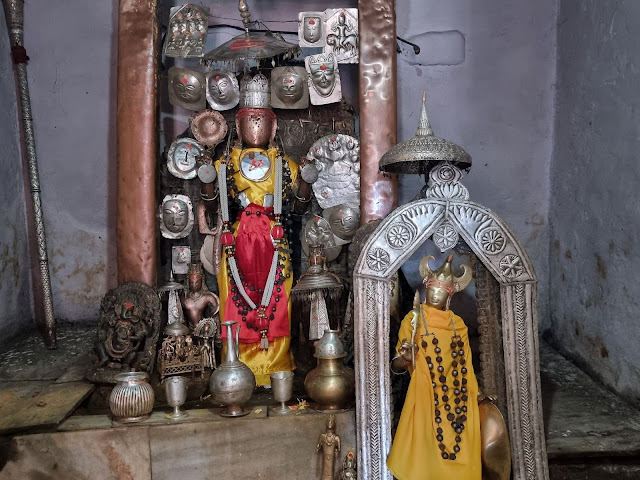
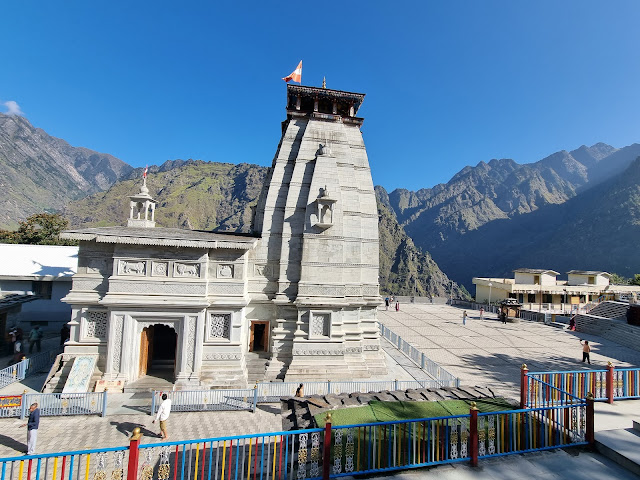



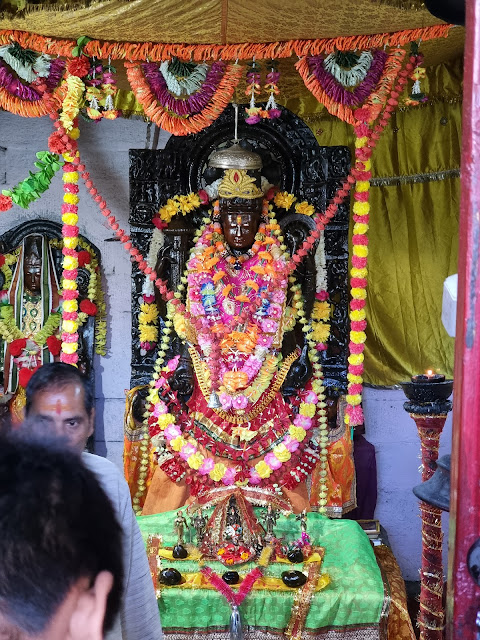
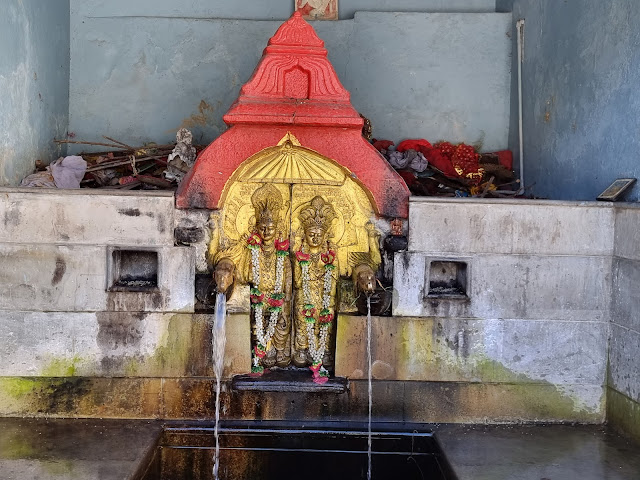







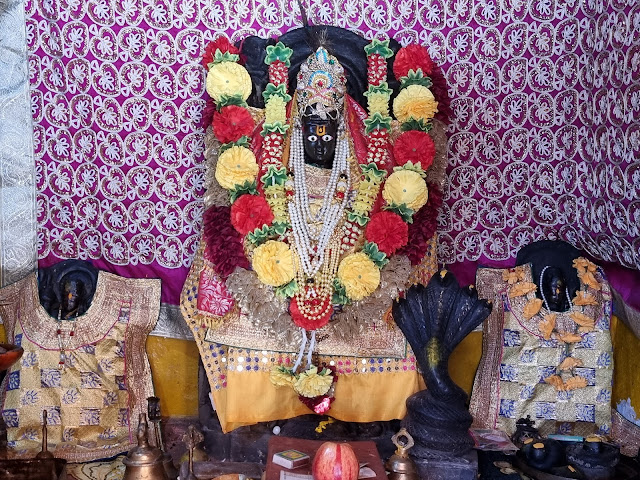
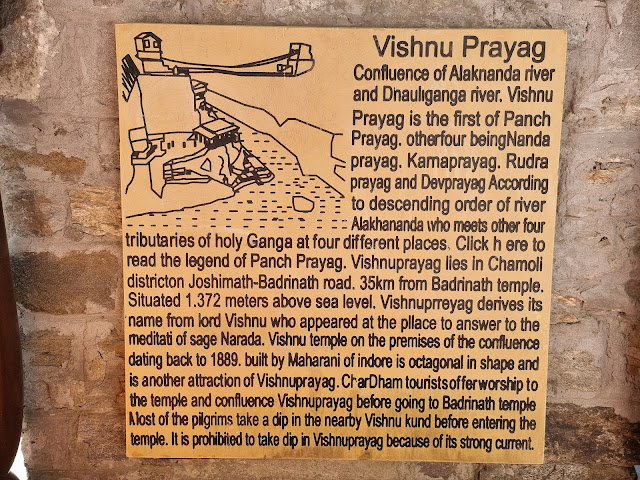

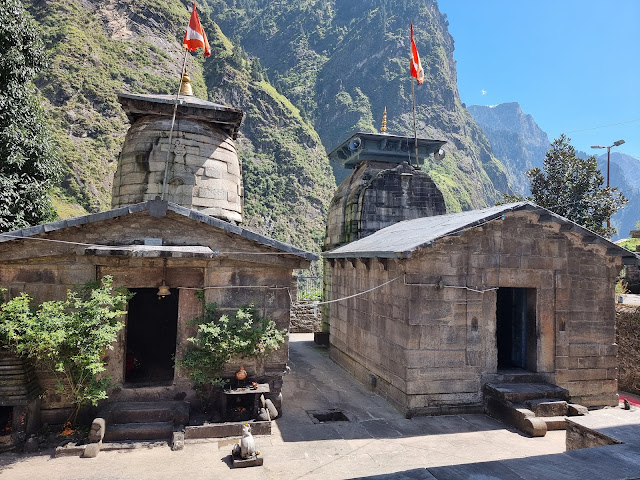















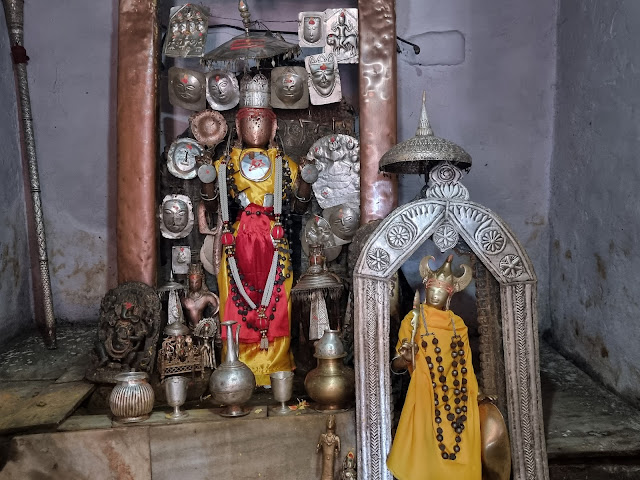








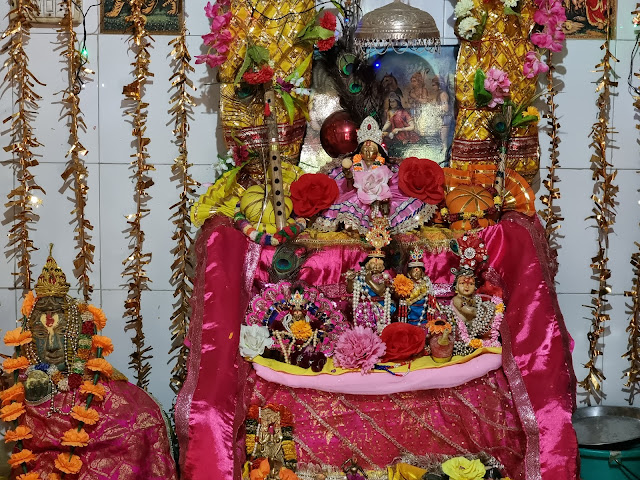





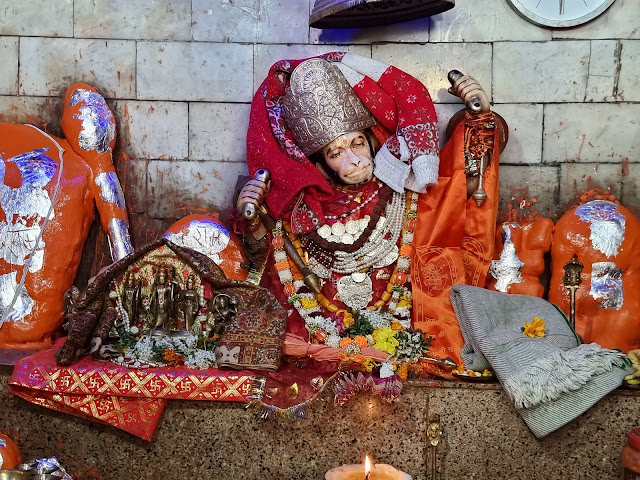














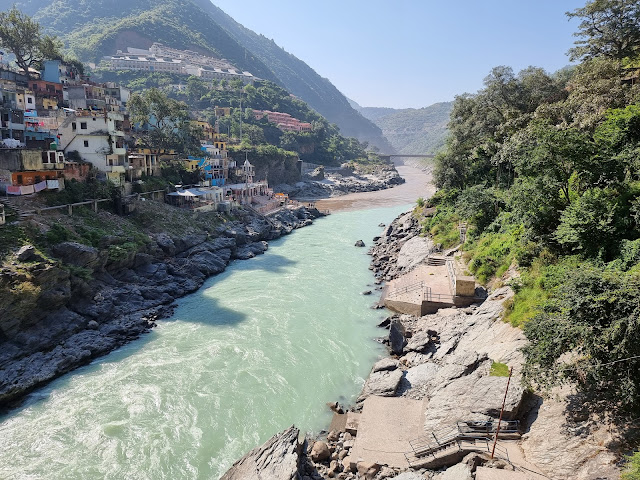




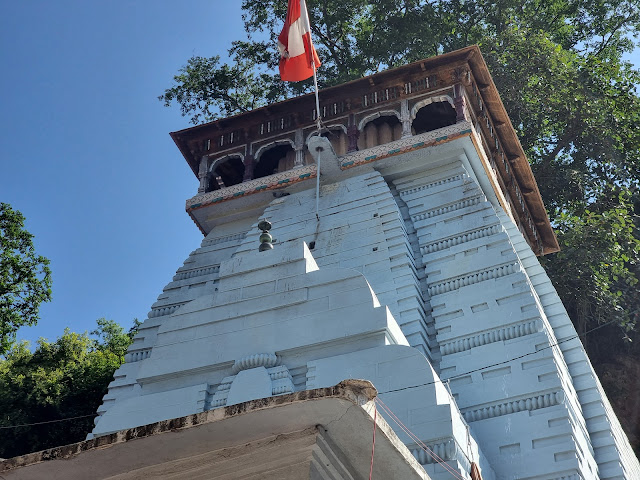

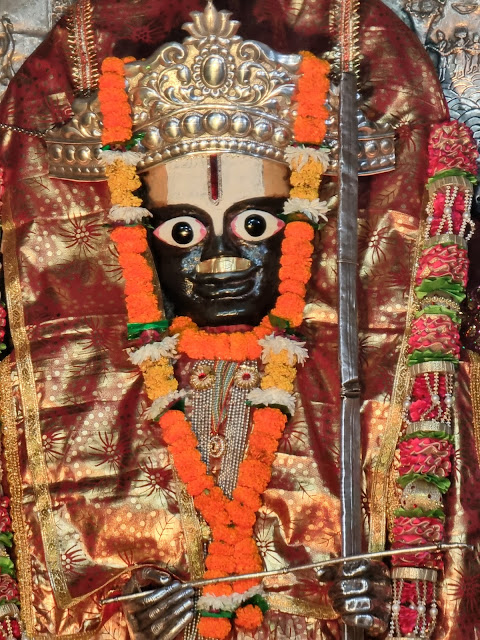


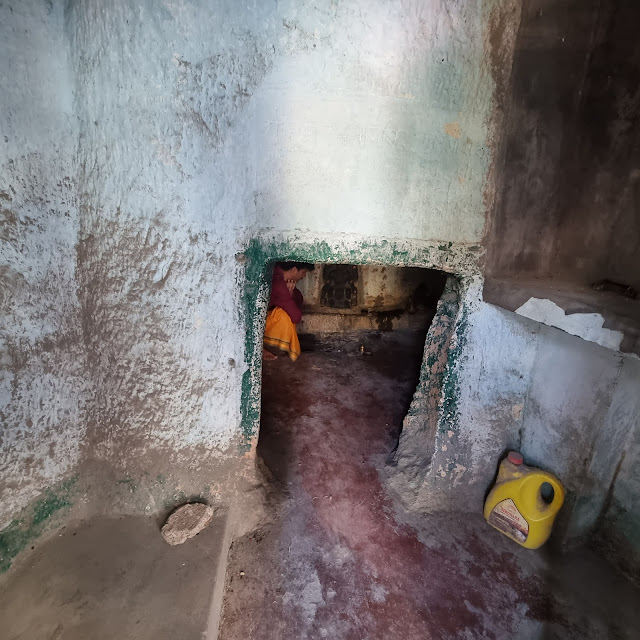






Comments
Post a Comment